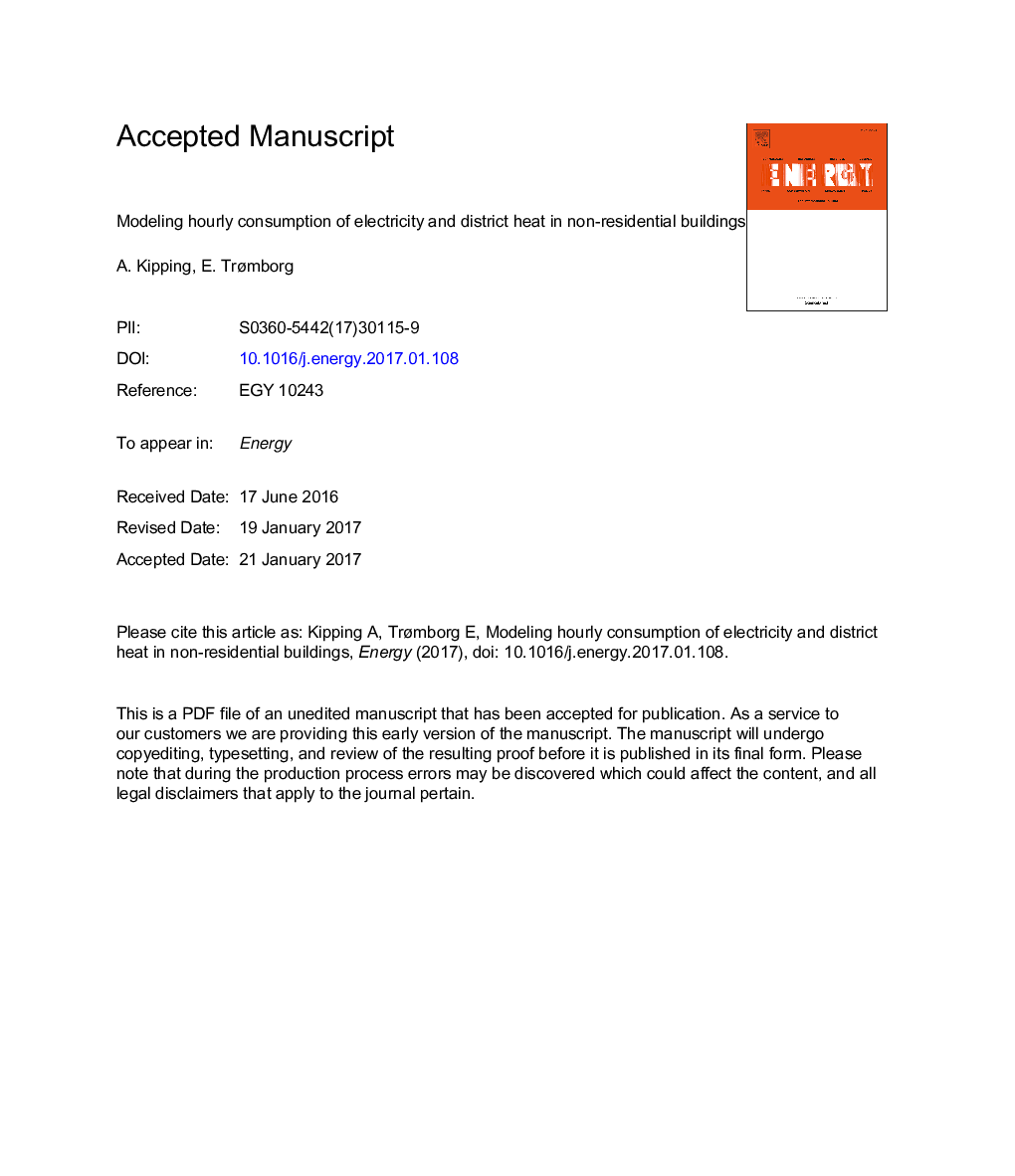| Article ID | Journal | Published Year | Pages | File Type |
|---|---|---|---|---|
| 5476115 | Energy | 2017 | 28 Pages |
Abstract
Models for hourly consumption of heat and electricity in different consumer groups on a regional level can yield important data for energy system planning and management. In this study hourly meter data, combined with cross-sectional data derived from the Norwegian energy label database, is used to model hourly consumption of both district heat and electrical energy in office buildings and schools which either use direct electric heating (DEH) or non-electric hydronic heating (OHH). The results of the study show that modeled hourly total energy consumption in buildings with DEH and in buildings with OHH (supplied by district heat) exhibits differences, e.g. due to differences in heat distribution and control systems. In a normal year, in office buildings with OHH the main part of total modeled energy consumption is used for electric appliances, while in schools with OHH the main part is used for heating. In buildings with OHH the share of modeled annual heating energy is higher than in buildings with DEH. Although based on small samples our regression results indicate that the presented method can be used for modeling hourly energy consumption in non-residential buildings, but also that larger samples and additional cross-sectional information could yield improved models and more reliable results.
Related Topics
Physical Sciences and Engineering
Energy
Energy (General)
Authors
A. Kipping, E. Trømborg,
